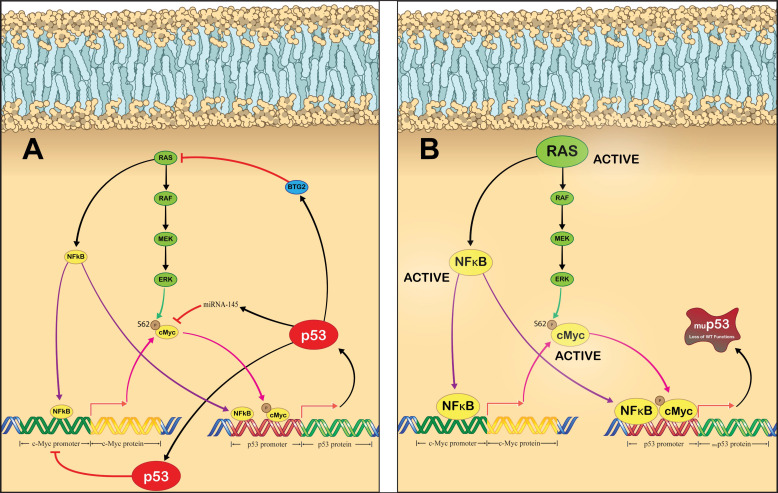Figure 3.
Mechanisms of p53 transcriptional activation and potential effects of p53 loss. Schemes follow another format. (A) Regulation of p53 expression in normal cells. RAS signaling leads to the activation of NF-κB as well as c-Myc, both of which directly bind to the p53 promoter and facilitate its expression. NF-kB also binds to the c-Myc promoter and induces its expression. The p53 protein then regulates these pathways, by stimulating the production of BTG2 and miRNA-145, which inhibit RAS and c-Myc function, respectively. Additionally, p53 protein can directly bind to the c-Myc promoter and repress its transcription. (B) Proposed effect that p53 loss can have on p53 promoter activity. Loss of p53 function can result in persistent RAS signaling through NF-κB and c-Myc, both of which will directly bind to and stimulate the p53 promoter. In cells with constitutively active mutant RAS and/or c-Myc, this pathway may be active even in the absence of p53 mutation/silencing. Legend: Arrows represent activation pathways (purple for NF-κB, pink for c-Myc, black for RAS and p53, green for phosphorylation event by ERK) and hammers represent inhibition.

